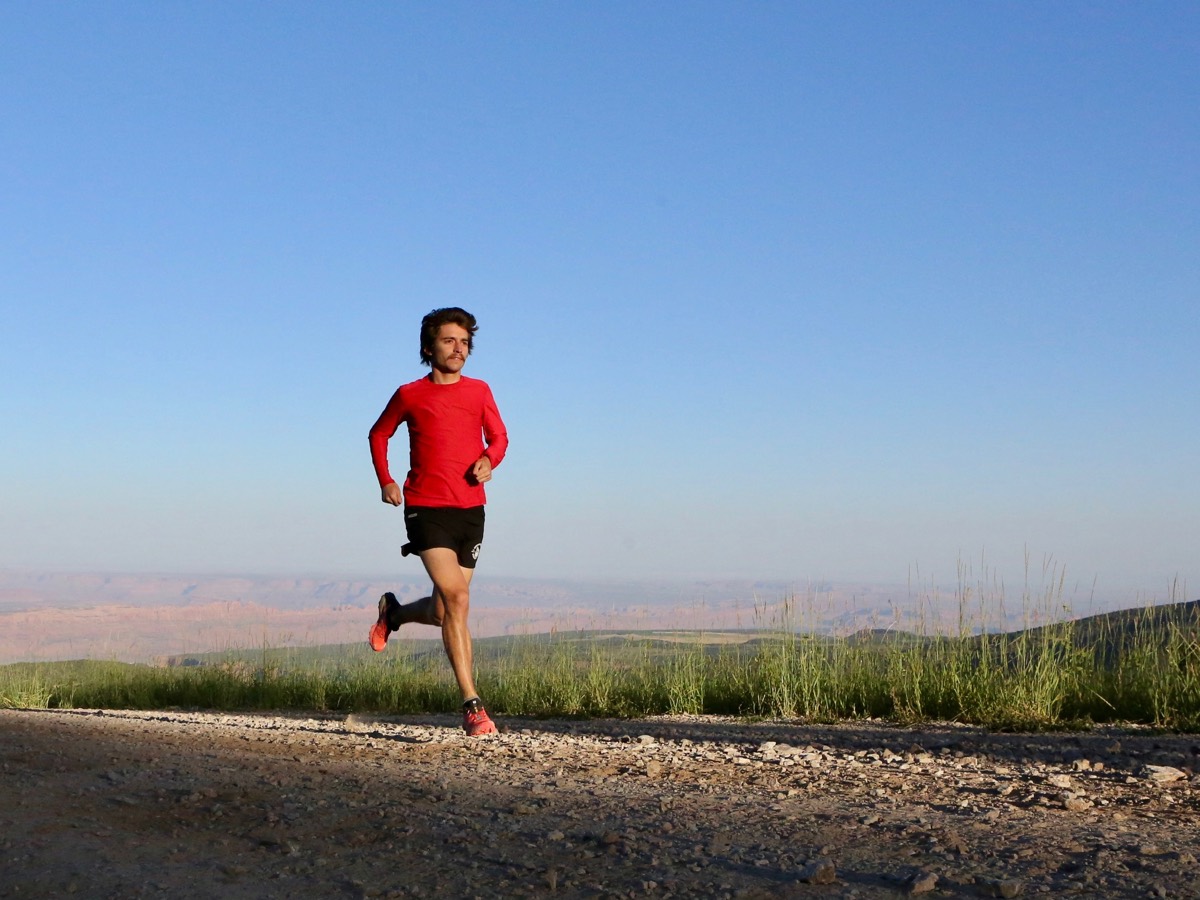
Like this article? Check out our book “Where the Road Ends!”
Welcome to this month’s edition of “Where the Road Ends: A Guide to Trail Running!” That’s the name of both this column and the book Meghan Hicks and Bryon Powell of iRunFar published in 2016. The book Where the Road Ends: A Guide to Trail Running is a how-to guide for trail running. We worked with publisher Human Kinetics to develop a book offering the information anyone needs to get started, stay safe, and feel inspired with their trail running. The book Where the Road Ends teaches you how to negotiate technical trails, read a map, build your own training plan, understand the basics of what to drink and eat when you run, and so much more.
This column aims to do the same by publishing sections from the book as well as encouraging conversation in the comments section of each article. We want you to feel inspired and confident as you take on your first few trail runs as well as connected to iRunFar’s community of trail runners! In this article, we excerpt from Chapter 2 and discuss the trail runner’s mindset.
At its simplest, trail running need not be any more complicated than an act you’ve done thousands of times. Most trail running, however, requires at least minor adjustments, including in the mind. There are three things everyone can do right now to get–and keep–your mind in the trail running game: be aware, be engaged, and be prepared. Let’s explore these concepts.
Be Aware
Let’s stop beating around the bush and, instead, observe it. To trail run effectively, you’ll need to see the bush, the rock, the downed log, and anything you might encounter from the top of your head to the bottom of your feet. That’s not meant to sound overwhelming. You have to be alert when walking around in new and changing environments every day of your life. As your pace increases, however, the consequences of tripping on a stone or running headlong into a branch multiply.
To trail run successfully, you have to be aware of what’s around you. Open your eyes and ears and actively take it all in. At the beginning, you should focus, on average, about 20 to 30 feet (7 to 10 meters) down the trail. If you have road running experience, this focus might seem too close, but the shorter distance will help reduce the time between when you spot an obstacle and when you have to react to it. If you focus farther out, you’ll occasionally start piling up multiple obstacles between when you spot them and when you have to react to them physically.
You should think of those 20 to 30 feet as your average focal point. If you’re running a straight, flat trail with few obstacles, your focal length should lengthen. On the other hand, if you’re running across a jumble of wet rocks or a tangle of downed branches, you’ll bring your gaze in closer. Your speed will similarly cause an adjustment in focal length; the length increases as you run more quickly and have less time to react for a given distance. Physical therapist and trail running coach Joe Uhan suggests,“even when technical terrain has your focus zoomed into the terrain immediately in front of you—as little as 10 to 15 feet (3 to 5 meters)—you should still glance up to a 100-foot (30 meters) horizon, so your brain has a vague idea of what’s coming up.”

Keep your gaze on the close ground and your mind engaged when running on technical terrain. Photo: Human Kinetics/Kirsten Kortebein
Over time, you’ll shift to looking for the positives rather than the negatives. That is, your vision will gravitate toward the one or more lines that you can run with the most efficient effort and track those lines more than the obstacles you’re trying to avoid. You’ll be looking for where you can put your feet rather than where you can’t.
You’ll also need to engage your peripheral vision. Catching a bit of motion out of the corner of your eye can alert you to a mountain biker coming around the bend or an animal in the trailside brush. Taking in the broader view will also cue you in on upcoming variations in terrain as well as any nearby streams, cliffs, or roads.
Although your peripheral vision works well, you should also actively glance around at your surroundings for just a few moments every minute or two. This approach will not only further inform you of the terrain, weather, and other potential concerns, but also let you take in the natural beauty that surrounds you, which is, after all, one of the primary benefits of trail running. Of course, you’ll only want to take this look around when you’re comfortable that you have a corresponding bit of easily negotiated trail for a few seconds longer than the time you take to peek at the scenery.
Over time, as you become more comfortable with trail running and more familiar with a particular trail or type of terrain, you’ll find yourself looking farther down the trail as you run. You’ll also find yourself being able to be less consciously alert, at least on familiar terrain, as the rhythm and reaction of trail running becomes second nature. You’ll find beauty in reaching this point both in your trail running career and on individual runs.
Believe it or not, part of being alert on the trails includes listening. While you’re getting into the sport and becoming familiar with what you’ll encounter and how often you’ll encounter it, lose the headphones on the trails. They’re not anathema to the sport by any means, but, depending on where you’re running, you’ll want to know how often you might encounter other pedestrians, mountains bikers, equestrians, pets, and wildlife that you might be able to hear before you can see. Over time, you’ll know when wearing headphones in both ears is appropriate, when you might want to have only one ear bud in, and when you’re best off nixing the noise completely.
Be Engaged
Watching and listening to what’s going on around you is not enough. You need to take that information and actively process it. You’ll want to read changes and adjust your stride and gaze accordingly. If you’re engaged, changes in daylight, weather, and other aspects might lead you to change your hydration, your clothing, or even your overall plan for the run.
The flip side of this is that you don’t want to be overengaged. If you’re nervous or rigid, you’re less likely to find the fluidity that helps you negotiate obstacles, tackle variation in terrain, and enjoy trail running overall. In short, be engaged, but not uptight.
Be Prepared
Aside from reading and reacting, being ready for the trails also means being prepared. You may have to plan for bodily needs, weather, and the run itself. For the most part, planning trail running is more significant than planning for a run of comparable distance or duration on the road. A mental shift is needed. You’ll be taking care of yourself out there, often with limited access to outside assistance.
Excerpted from Where the Road Ends: A Guide to Trail Running, by Meghan Hicks and Bryon Powell. Human Kinetics © 2016.
Call for Comments
- How does running on trails make you think differently than running on pavement?
- When you started trail running, what mindset changes did you experience? For example, how did your awareness adapt to your new physical environment?

